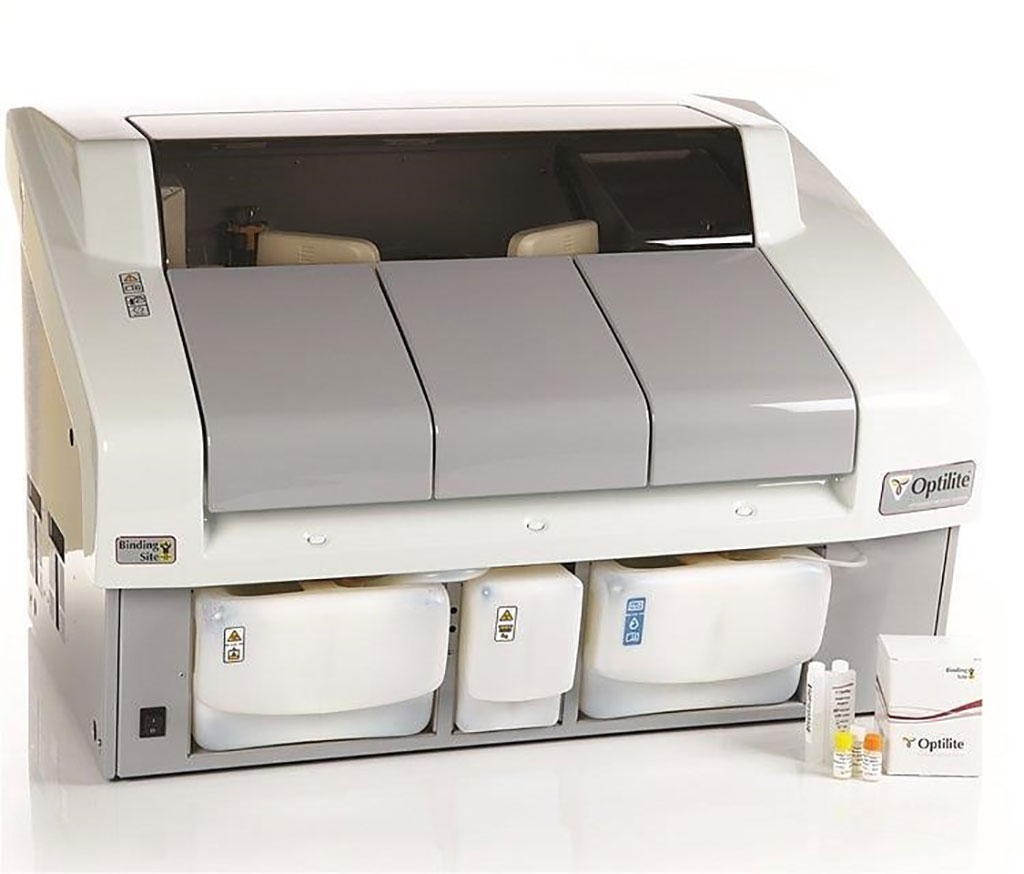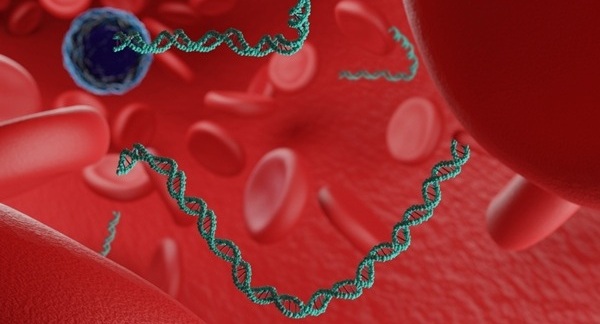Sensitive Method Detects Free Monoclonal Light Chains in Serum
By LabMedica International staff writers
Posted on 26 Oct 2021
Neoplastic monoclonal gammopathies (NMG) consist of monoclonal gammopathy of undetermined significance (MGUS), asymptomatic or smoldering multiple myeloma (SMM) and multiple/plasma cell myeloma (MM). Posted on 26 Oct 2021
Multiple myeloma is a malignant tumor of plasma cells and is generally associated with synthesis and secretion of monoclonal immunoglobulins by tumor cells. MM is the commonest hematologic malignancy in adults. Higher levels of serum free monoclonal light chains (SFLC) have been observed to result in shorter survival, perhaps through induction of renal damage.

Image: The Optilite Clinical Chemistry Protein Analyzer (Photo courtesy of The Binding Site)
Clinical Pathologists at the Medical College of Georgia at Augusta University (Atlanta, GA, USA) investigated a sensitive method for detecting free monoclonal light chains in serum that could provide a marker for residual/minimal residual disease and as an adjunct to serum protein electrophoresis to serve as a screening method for monoclonal gammopathies.
Quantification of SFLC was conducted by using kits procured from The Binding Site and assayed with an Optilite analyzer (Birmingham, UK). Rabbit polyclonal antisera to kappa and lambda free light chains were procured from SEBIA Inc. (Norcross, GA, USA). Residual clinical serum samples were assessed for monoclonal SFLC by a modified serum immunofixation protein electrophoresis (SIFE) procedure (the Modified SIFE was designated FLC-Modified SIFE). Results from this modified immunofixation electrophoresis were compared with results from commercially available MASS-FIX/MALDI assay (Mayo Clinic Laboratories, Rochester, MN, USA).
The scientists reported that monoclonal free kappa light chains could be detected to a concentration of about 1.78 mg/L and monoclonal free lambda light chains to a concentration of about 1.15 mg/L without the need for special equipment. Comparison of these thresholds with parallel results from a commercially available MASS-FIX/MALDI assay revealed the modified electrophoretic method to be more sensitive in the context of free monoclonal light chains. FLC-Modified SIFE revealed monoclonal light chains in agreement with the expected findings, given a patient's diagnosis and immunoglobulin type determined by conventional SPEP and SIFE.
The authors concluded that modified serum immunofixation electrophoresis has been shown to detect low levels of monoclonal free light chains at a sensitivity suitable for the method to be used in detecting minimal residual disease, and potentially in a screening assay for monoclonal gammopathies. The disparity in the results with commercially available MASS-FIX/MALDI assay is postulated to be due to limited repertoire of reactivity of nanobodies of camelid origin. The study was published on October 12, 2021 in the journal Practical Laboratory Medicine.
Related Links:
Medical College of Georgia at Augusta University
The Binding Site
SEBIA Inc
Mayo Clinic Laboratories













